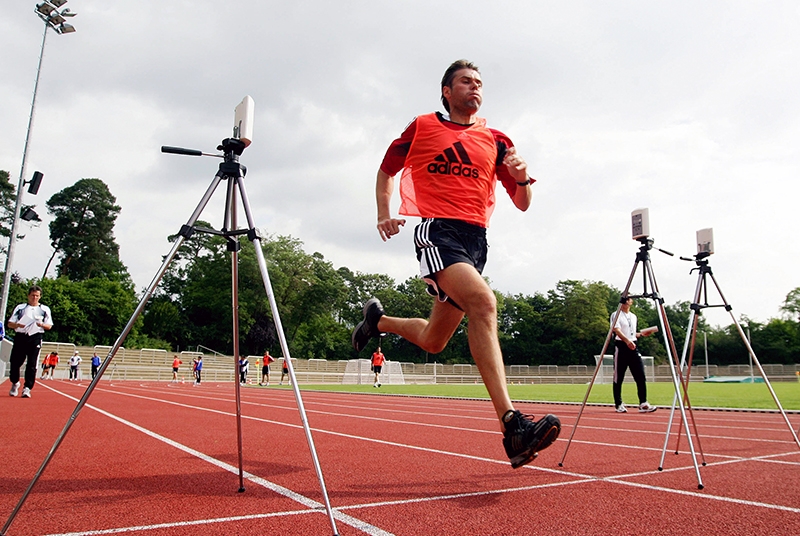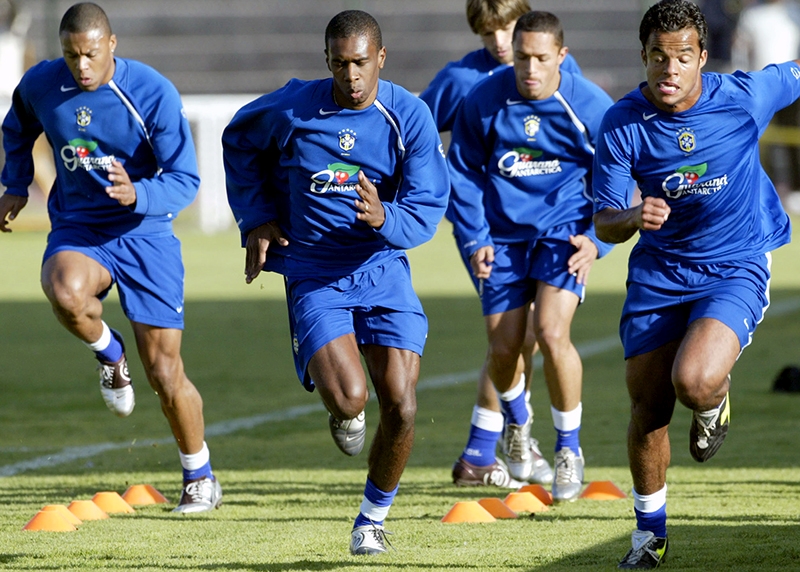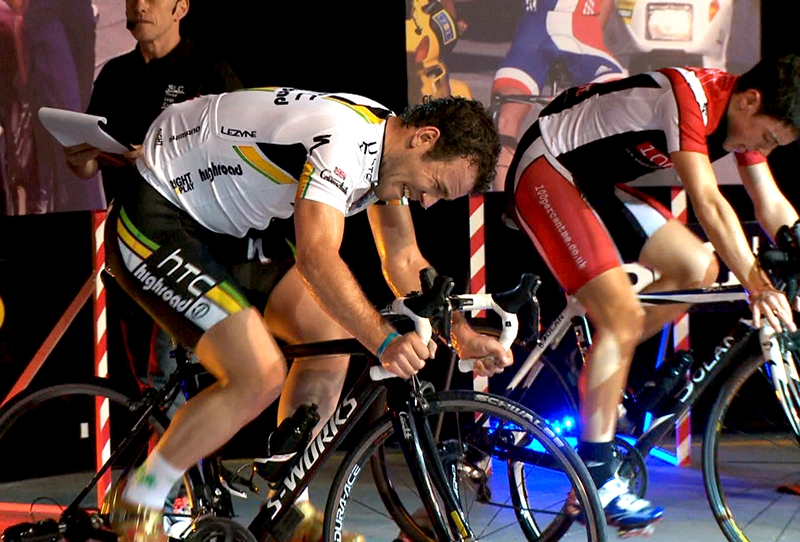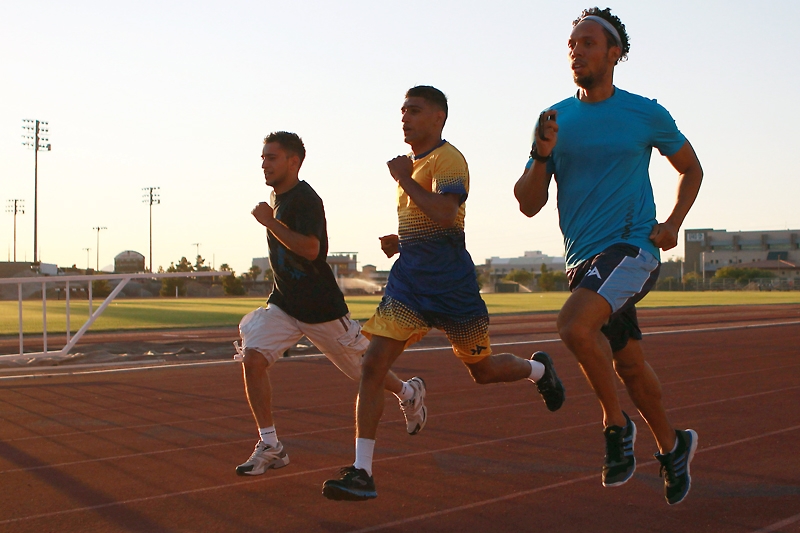You are viewing 1 of your 1 free articles. For unlimited access take a risk-free trial
High intensity intervals: variety is the spice of success!

Andrew Sheaff looks at brand new research on how to make high intensity intervals more effective without increasing perceived effort
As all athletes know (or should know!), interval training is a critical component of any endurance program, and a potent enhancer of endurance performance. Since the inception of interval training decades ago, many variations have been created, using an array of repetition distances/durations and recovery periods. While the distances may vary, most athletes have stuck to the traditional approach of performing a set number of intervals at constant, predetermined speeds. While this strategy has been proven effective over the years, athletes and coaches are always tinkering with their training in the hopes of finding an extra edge. New options are beginning to emerge, and that will be the focus of this article.Effective strategies
One of the key goals of interval training is the improvement of maximum oxygen uptake (VO2max). Previous research has demonstrated that accumulating more time at intensities above 90% VO2max is a key aspect of effective interval training sessions(1,2). If the time spent at high rates of oxygen consumption is such an important factor, an athlete could simply work harder and longer to achieve a greater VO2 response. However, while this might work occasionally in the short-term, it’s usually not an effective strategy for hard training athletes, who are already working at the edge of their abilities. Continually adding more work and more intensity will simply result in injury or stagnation.Fortunately, there is accumulating evidence that traditional interval training sessions can be improved by strategically altering the intensity within each interval. Previous research has examined whether interval sessions with intra-repetition changes in intensity can positively impact the VO2 response to a given session. Using both fast-start, decreasing intensity sessions(3) and varied intensity sessions(4) have been shown to positively impact the VO2 response.
However, previous studies have not directly compared these two methods. Further, the intensity of these interval sessions was standardized according to maximal aerobic speed (the speed that elicits maximal oxygen uptake). This is important because athletes with the same maximal aerobic speed (MAS) can have very different lactate thresholds (LT – the point at which lactate accumulates and fatigue begins to increase rapidly) - and LT is often a better predictor of the physiological response to training. It’s not clear if this effect would remain once individual abilities were more rigorously accounted for.
New research
To better understand the impact of varying intensity during training sessions, researchers sought to get clearer answers. In a study published just two months ago, ten well-trained cross-country skiers performed three different interval training sessions on different days(5). Each session consisted of five sets of 5-minute intervals. However the sessions varied in the following ways:- In the varied intensity session, the subjects performed at 100% MAS for 40 seconds, followed by 60 seconds at lactate threshold, plus an extra 20% of the workload difference between lactate threshold and MAS. This flip-flopping was repeated for three cycles during the 5-minute interval.
- In the decreasing intensity session, the subjects spent two minutes at 100% MAS, followed by 3 minutes at LT plus 20% of the workload difference between LT and MAS.
- In the constant intensity session, training intensity was held constant at the average intensity of the other two protocols.
Figure 1: Structure of interval sessions

Key: A = initial session to determine MAS in the skiers. B = the structure of the varied intensity session; C = structure of the constant intensity session (ie ‘normal intervals’); D = structure of decreasing intensity session.
The findings
The results were impressive to say the least. The average oxygen uptake of the subjects was significantly higher when performing decreasing-intensity and varying-intensity interval sessions. Just as importantly, they spent more time at a VO2 greater than 90% of their VO2peak. As noted earlier, achieving higher oxygen uptakes, and spending more time at greater than 90% of VO2peak are key determinants of the training response.Even better, while the decreasing-intensity and varying-intensity intervals clearly demonstrated a superior oxygen uptake response, the participants didn’t perceive the sessions to be any more difficult than the constant-intensity intervals. This was true whether the session was assessed as a whole, or by the average of different time points within the session. While the subjects experienced a large physical response, this response didn’t feel any more difficult to the subjects. More work for the same effort is definitely a positive outcome!
Practical application
In terms of practically applying these findings, these supercharged intervals can be used strategically in two different ways. If interval training is a large part of your training program, it makes sense to start use the slightly less effective constant-intensity intervals earlier in a training cycle when you’re less fit, and therefore when any stimulus is likely to be beneficial. As you become fitter over time and need a more potent stimulus, you can start using these alternative interval sessions for an added boost, all without making the sessions any more difficult. Alternatively, if interval training comprises a relatively small portion of your entire training, it makes sense to use the most effective methods straightaway, especially if they don’t come at an extra recovery cost. Focusing on either decreasing- or varying-intensity intervals is a great way to improve your results without compromising your other training priorities.Not sure whether to use the decreasing intensity interval or varied intensity interval sessions? At a basic level, performing the sessions that you most enjoy will tend lead to the best adherence, and thus the best results. Going deeper, you could make your selection based upon the challenges you’ll face when competing. If you are subject to repeated changes in intensity while racing, the varied intensity approach may be more effective for you. If you’re subject to fast starts when competing, the decreasing intensity session could be more valuable.
Importantly, the results seem to hold up regardless of how you choose to determine your intensity. If you have the ability to precisely measure the physiological response to your training, do so! If not, plan out your training sessions so that there are deliberate and significant changes in the intensity of your training, measured either in terms of power, velocity, time, or however else you track your training.
While the basics of sound training continue to remain the same, practical experience and validating research is demonstrating that slight tweaks on established fundamentals can yield even more performance benefits. Rather than performing your interval training sessions at a constant intensity, consider varying your intensity like the subjects in this study. If you’re feeling creative, you can also use the principle of varied intensity to design and implement your own twist on traditional interval training in a manner that suits your needs.
References
- Sports Med Phys Fitness. 2006 Mar;46(1):1-14
- Sports Med. Sep-Oct 1986;3(5):346-56
- Strength Cond Res. 2015 Sep;29(9):2434-40
- Int J Sports Physiol Perform. 2020 Apr 3;1-8
- Int J Sports Physiol Perform. 2021 Nov 22;1-7
Related Files
Newsletter Sign Up
Testimonials
Dr. Alexandra Fandetti-Robin, Back & Body Chiropractic
Elspeth Cowell MSCh DpodM SRCh HCPC reg
William Hunter, Nuffield Health
Newsletter Sign Up
Coaches Testimonials
Dr. Alexandra Fandetti-Robin, Back & Body Chiropractic
Elspeth Cowell MSCh DpodM SRCh HCPC reg
William Hunter, Nuffield Health
Keep up with latest sports science research and apply it to maximize performance
Today you have the chance to join a group of athletes, and sports coaches/trainers who all have something special in common...
They use the latest research to improve performance for themselves and their clients - both athletes and sports teams - with help from global specialists in the fields of sports science, sports medicine and sports psychology.
They do this by reading Sports Performance Bulletin, an easy-to-digest but serious-minded journal dedicated to high performance sports. SPB offers a wealth of information and insight into the latest research, in an easily-accessible and understood format, along with a wealth of practical recommendations.
*includes 3 coaching manuals
Get Inspired
All the latest techniques and approaches
Sports Performance Bulletin helps dedicated endurance athletes improve their performance. Sense-checking the latest sports science research, and sourcing evidence and case studies to support findings, Sports Performance Bulletin turns proven insights into easily digestible practical advice. Supporting athletes, coaches and professionals who wish to ensure their guidance and programmes are kept right up to date and based on credible science.













